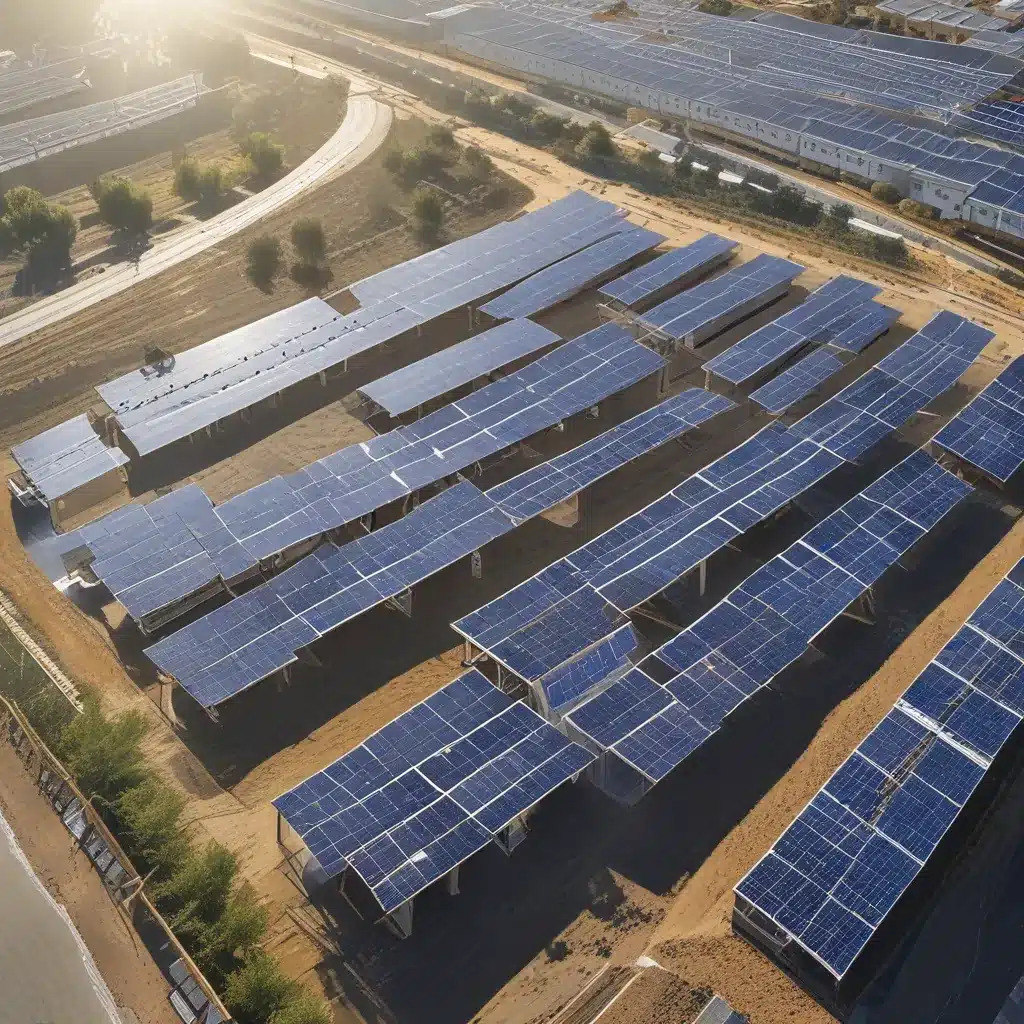
Harnessing the Sun’s Power: A Bright Future for Commercial Solar
As the sun sets on 2023, the solar energy industry is gearing up for an even more luminous 2024. With the groundbreaking Inflation Reduction Act fueling unprecedented growth, I’m thrilled to take you on a journey through the top commercial solar installations that are set to shine in the year ahead.
Scaling New Heights: The Tallest of the Tall
Let’s start by scaling the heights of commercial solar domination. In 2024, the world’s largest rooftop solar installation is poised to take center stage at the Walmart Supercenter in Buckeye, Arizona. Spanning an incredible 2.8 million square feet, this solar behemoth will generate a staggering 32 megawatts of clean, renewable energy – enough to power over 5,000 homes! It’s a true testament to Walmart’s commitment to sustainability and a shining example of what’s possible when corporate giants harness the sun’s power.
But Walmart isn’t the only one reaching for the stars. In the Lone Star State, Texas-based Amazon is upping the ante with a colossal 50-megawatt rooftop solar installation at their fulfillment center in Coppell. This behemoth will dwarf even Walmart’s impressive project, showcasing the Lone Star State’s unwavering dedication to solar energy.
Shining Across the Fruited Plain
While the Southwest may be hogging the spotlight, the rest of the country is no slouch when it comes to commercial solar dominance. In the Midwest, General Motors is leading the charge with a 30-megawatt solar array at their assembly plant in Spring Hill, Tennessee. This project not only powers their manufacturing operations but also serves as a community solar hub, providing clean energy to local residents through innovative “roof rental” programs.
Not to be outdone, the East Coast is also making waves in the commercial solar arena. In New Jersey, Ikea’s massive 24-megawatt solar installation is set to transform their iconic blue-and-yellow stores into shining beacons of sustainability. And on the other side of the Mason-Dixon line, Target’s 20-megawatt project in Fredericksburg, Virginia is proof that even the nation’s beloved big-box stores are embracing the power of the sun.
Powering the Future, One Rooftop at a Time
As we gaze out across the solar-powered landscape of 2024, it’s clear that the commercial sector is leading the charge towards a cleaner, brighter future. From coast to coast, businesses of all sizes are harnessing the power of the sun to offset their energy costs, reduce their carbon footprint, and pave the way for a more sustainable tomorrow.
But it’s not just the big players making waves. Small and medium-sized businesses are also getting in on the action, leveraging innovative “roof rental” programs and community solar initiatives to take control of their energy needs. By partnering with solar energy providers like Solar As Systems Inc., these forward-thinking companies are not only reducing their operating costs but also contributing to the greater good of their local communities.
Illuminating the Path to a Brighter Tomorrow
As we look ahead to the future, it’s clear that the commercial solar landscape is poised for even greater growth and transformation. With the Inflation Reduction Act providing long-term certainty and support, the industry is primed to shatter records and leave an indelible mark on our energy landscape.
But the real story lies in the impact these commercial solar installations will have on our communities, our environment, and our collective journey towards a more sustainable future. By harnessing the power of the sun, these forward-thinking businesses are not only saving money and reducing their carbon footprint, but they’re also paving the way for a brighter, more equitable tomorrow.
So, as the sun rises on 2024, let’s raise a (metaphorical) glass to the trailblazers and visionaries who are leading the charge in the world of commercial solar. Their stories of innovation, collaboration, and environmental stewardship are the beacons that will guide us all towards a future powered by the limitless energy of the sun.


